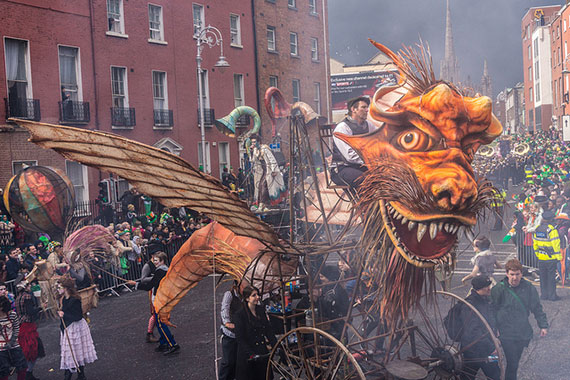When you watch a movie there is one element that never changes: a leading character. The whole movie centers around this leading player and the story is created around this subject. It is no different with a still image, like a photograph. Each photo should have its lead character, called the subject, around which the image is created.

Photo by William Murphy; ISO 100, f/12.6, 1/125-second exposure.
By creating this center of interest you form a visual focal point that anchors the eye of the viewer and holds it there. Everything else is discovered by the eye in relation to this one focal point. How the eye moves into the rest of the image is determined by this point. So in order for you to create a successful image you need to emphasize the subject. This is done in one of several ways, so let’s take a look:
1. Get in closer
When you get in really close to the subject it starts to fill the whole frame and the eye can no longer miss the subject. It powerfully directs your attention to the subject, as there is nothing else in the image to compete with it. It is a simple but dramatic emphasis of a subject. Use your feet more often when shooting and you will see just how dynamic the resulting images are.
2. Use Negative Space
Negative space in photography refers to the unoccupied or empty areas around and between the subject of an image. Utilizing negative space effectively can emphasize your subject by simplifying the scene and removing distractions. This technique draws the viewer’s attention directly to the main subject, creating a more powerful and focused composition. It can also convey a sense of scale, isolation, or emotion, depending on how the negative space interacts with the subject. By balancing the subject with ample negative space, photographers can achieve a more impactful and aesthetically pleasing image.
3. Selective focus
Using a wide aperture (low f-stop number) to control the depth of field, or depth of focus, lifts the subject out of a background that is now blurred by the very shallow depth of field. With the background details now blurred the subject stands out against it in clear focus. This simplifies the images and causes all attention to be focused on the subject.

“focus” captured by 55Laney69
4. Subject placement
By placing your subject off center it creates a very pleasing image to the eye. Called the rule of thirds and discovered by the Greeks, it adds a dynamic element to your photo. Imagine a noughts and crosses or tic-tac-toe grid over the scene. Where the two horizontal lines intersect with the two vertical lines is where you place your subject thereby emphasizing it to great effect.
5. Simplify your backgrounds
By placing the subject on a simple, plain single color background there is no doubt as to which is the subject. Making sure that the color of your subject and the background contrast with each causes the subject to be clearly emphasized. You may need to change your viewpoint or angle of view in order to exclude clutter and keep the background simple. Remember that less is more and the KISS principle applies here.

“Model photo session” captured by shinosan
The key to a great a photographs is a clear subject. Knowing where to place it in a photograph as you learn digital photography, allows you to emphasize the subject to great effect with stunning photo results. Happy shooting!
About the Author:
Wayne Turner has been teaching photography for 25 years and has written three books on photography. He has produced 21 Steps to Perfect Photos; a program of learner-based training using outcomes based education.
Like This Article?
Don't Miss The Next One!
Join over 100,000 photographers of all experience levels who receive our free photography tips and articles to stay current:






Great ideas!
I especially like to use selective focus to bring attention to my subject. I keep in mind that aperture isn’t the only way to reduce the depth of field. The depth of field gets shorter as the focal length of the lens increases, as the distance to the subject decreases, and as the aperture size gets larger (or, equivalently, as the f/stop number gets smaller).
I like photos that direct your attention to a subject. A photographer must emphasize a subject and this is usually achieved by him coming closer to it and by simplifying the background (you have picked great examples in your photos by the way)
Awesome. Job here on defining everything nice one. Thanks. Really enjoyed reading your post.